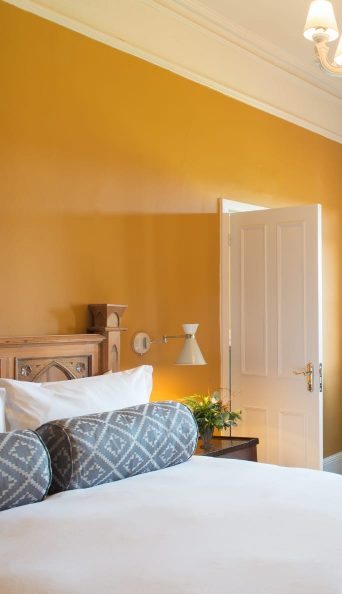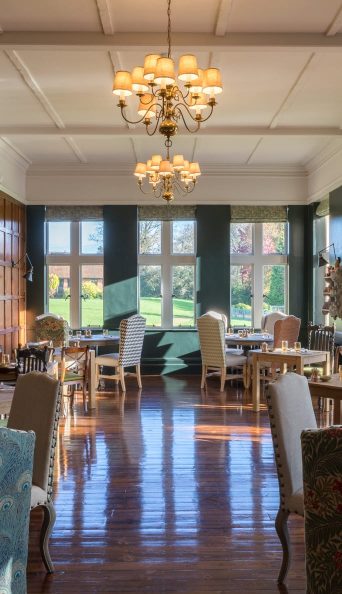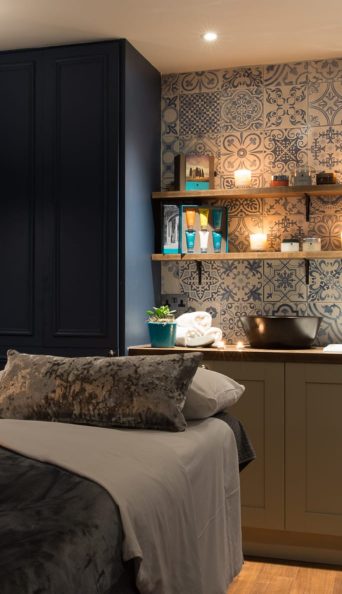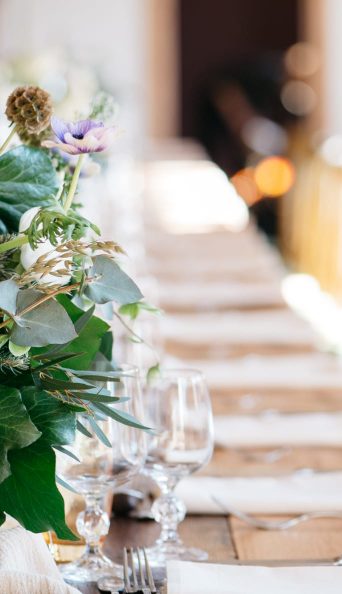Journal New Forest Collection
Wedding Traditions From Around The World
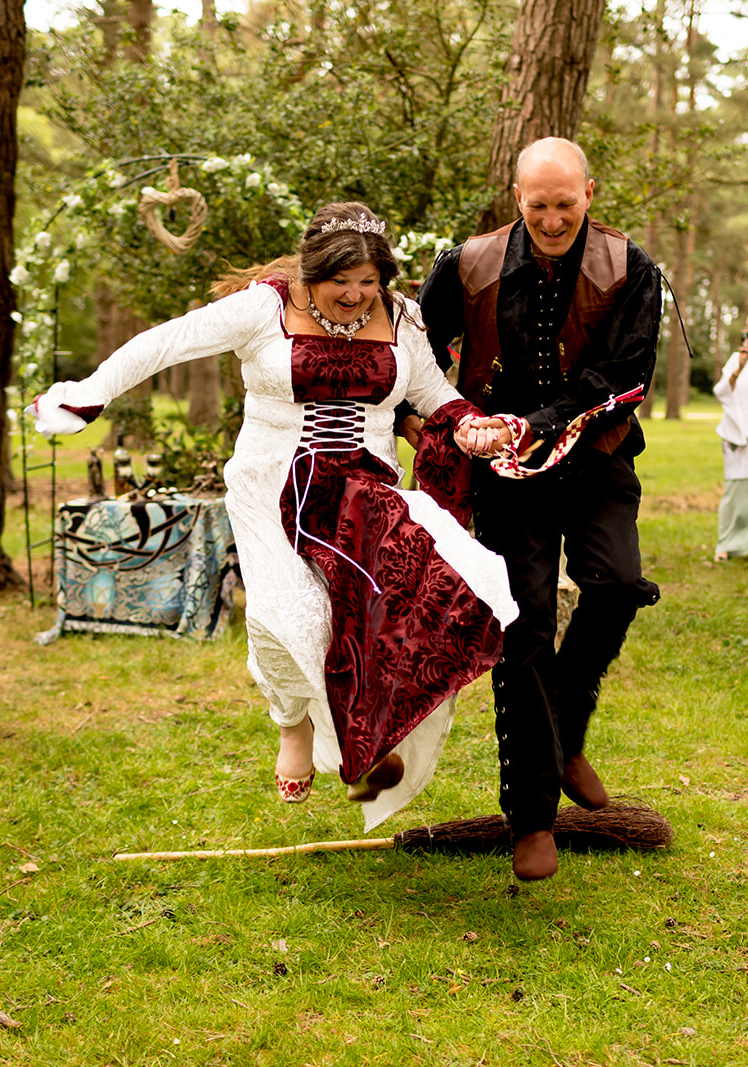
When it comes to honouring their commitment to one another, couples around the world have found all sorts of ways to make their wedding day meaningful and memorable.
If you’re looking for inspiration for ideas to weave into your ceremony or celebrations, or are simply intrigued as to how other people might say, ‘I do…’, take your pick from this treasure trove of rich and fascinating traditions from across the globe.
English wedding traditions
Instead of joining in the mad dash to catch the bride’s wedding bouquet, perhaps you’ve stood back and wondered what this specific tradition is really all about?
You’d have to go back to 15th century England to see its origins in action, with guests descending on the startled bride to grab and snatch at her clothes and hair, believing that some of her good fortune would then be passed on to them.
Small wonder that the tradition of throwing flowers at the mob emerged to save her from bruises and frankly, from the whole experience ruining her big day.
Scottish wedding traditions
The Scottish ‘wedding scramble’ originated in a similar way to the English ‘bouquet toss’. Inquisitive onlookers were distracted and more easily dispersed as the bride’s father threw coins their way, allowing the bride to emerge in relative peace from her home before leaving for the ceremony.
This tradition, or the ‘warsel’ as it’s still known in Ayrshire, is also meant to bring wealth and prosperity to the new couple, and continues to this day.
Indian wedding traditions
Couples marrying in India pledge their vows to each other around the holy fire burning inside a metal bowl. This fire symbolises purification, and as an elemental representation of the Hindu deity Agni, also acts as a sacred witness to the ceremony.
The bride and groom take seven steps or circles around the fire whilst reciting a traditional Vedic mantra expressing their desire to support one another, remain friends, and as it says so beautifully, ‘enjoy the fruits of all seasons’.
Jewish wedding traditions
The breaking of glass at the end of the Jewish wedding ceremony was traditionally done by the groom, and is a ritual enjoyed by both partners in more modern times.
Stepping on the glass inside a cloth bag (which is often kept as a memento of the special day) is said to symbolise the breaking apart of one state in order to create something new. It may also be an acknowledgement that some uncomfortable times, where one partner may need to protect and support the other, are part of marriage for any couple.
Polish wedding traditions
Newlyweds in Poland are reminded in a similar way that not all will be sweet during their life together.
Once their wedding ceremony is over and the couple arrives home for a party, they are greeted by their parents with a traditional gift of salt and bread, with the salt symbolising tears, and the bread that the two should never go hungry. The couple have a small taste of each, and then drink a glass of vodka or wine, with the glasses sometimes thrown back over their shoulders. Glasses that break mean good fortune all round!
Chinese wedding traditions
The focus on good fortune is fundamental to any Chinese wedding, and even the day itself takes place on a particularly auspicious date chosen for the couple in consultation with a Feng Shui master, monk or astrologer.
Chinese wedding traditions include the couple performing a tea ceremony to express their love and appreciation for their parents. The tea set, in the lucky red colour that is the colour scheme of choice for every Chinese wedding, is decorated with two intertwined characters for ‘Joy’ in the form of the Double Happiness symbol.
Portuguese wedding traditions
Celebrating a newly married couple by wishing them prosperity and good fortune is of course customary in all traditions. However, Portuguese couples take things a step further – quite literally – in the form of the Money Dance where guests hand over hard cash to dance with the bride after the ceremony.
The popular bride may also be barefoot in accordance with the ancient tradition of stuffing one of her shoes with money. Her wedding shoe is passed around during the reception or placed on the dancefloor to be filled with donations, ensuring the couple’s financial wellbeing at the beginning of their marriage.
Italian wedding traditions
You might also see this custom taking place at an Italian wedding where things are taken to the next level, involving not only the bride’s shoes but other items of wedding attire.
In the tradition of ‘taglio della cravatta’, the groom’s tie is cut into tiny pieces which are then taken by the groomsmen and offered for sale to guests at the reception. The more money raised, the happier and more prosperous the marriage will be, naturalmente!
Turkish wedding traditions
Following in the footsteps of these clothing-based traditions from around the world is the Turkish custom of writing down the names of the single women in the wedding party on the sole of the bride’s shoe. According to folklore, after all the dancing and celebrations, the first name that is rubbed off (though some say last, so maybe everyone wins?) will be the one getting married next.
And if that didn’t work for you, the Turkish practice of ‘gelin teli’ just might. The bride is adorned with different lengths of sparkly tinsel which her friends then take turns to choose. The shortest one wins!
Greek wedding traditions
Close friends of the happy couple, there to support them during the wedding itself and beyond, feature in wedding traditions wherever you go. Greek custom has it that the koumbaros, or best man in whom the groom has placed his trust, shaves the groom on the morning of his wedding day.
The word koumbaros signifies the close bond that these friends now share, and along with the koumbara, or bride’s maid of honour, he will go on to play the important role of spiritual guardian to the married couple’s children.
Irish wedding traditions
And so, having read this inspiring list, and are deciding to ‘get hitched’ yourself, it’s worth noting that the phrase ‘tying the knot’ refers to the ancient Celtic tradition of handfasting that goes back over 7,000 years. Old Irish carvings and poetry depict couples with their wrists bound together with a cloth or cord symbolising their attachment.
This ‘handfasting’ lasted for a year and a day, before the couple either decided to dissolve the bond, or proceed with formal marriage.
With the popularity of celebrant-led ceremonies, civil partnerships and modern couples looking to connect more deeply with actions that are meaningful to them personally, more and more couples are enjoying handfasting, and their own variations of the other traditional rituals covered here, during their weddings today.
If you’ve been inspired by checking out the first article on Wedding Traditions Around The World, read on for more insight into ways that couples across the globe have been pledging their love to one another and celebrating their union since records began.
Zimbabwe wedding traditions
In Zimbabwe, it’s customary for guests to shower a new couple with money during their first dance, symbolising their support for the newlyweds and setting them up for a rich and prosperous marriage.
In more modern times, friends and family will often pay extra for the bride and groom to exchange their first kiss!
Jamaican wedding traditions
Money shows up again in an uncomfortable Jamaican wedding tradition where Jamaican brides place a coin in their shoe to wear throughout the wedding celebrations.
Enduring the presence of the coin was once said to show resilience and an ability to endure hardships that would ultimately lead to prosperity and a rich and happy married life.
Japanese wedding traditions
Surely one of the most creative and evocative traditions hails from Japan, where 1001 origami cranes are folded by the bride and her family to bless the ceremonial space on a wedding day.
The crane has long been associated with health, prosperity and success, and the time and focus it takes to create the elegant paper birds, each one a work of art, gives the bride time to focus on her coming marriage and the efforts it will take to create a strong and beautiful relationship.
Morocco wedding traditions
Another gorgeously artistic tradition from another part of the world is the Moroccan henna ceremony, where the bride and her female friends and relatives gather to decorate and beautify the bride before the ceremony itself.
Certain designs are associated with luck, fertility and good health, with the more ornate patterns reserved for the bride’s hands and feet, before henna is also applied to the other female members of the wedding party.
Pakistani wedding traditions
A traditional Pakistani wedding often lasts for several days and involves many complex rituals and customs. One of these involves the couple seeing each other for the very first time, with the bride removing her veil and revealing her face to her new partner.
To lighten the mood at this potentially nerve-wracking moment, the bride’s female relatives run away with the groom’s shoes, holding them to ransom until he pays up for their return!
Korean wedding traditions
In times gone by, a groom in Korea would present his mother-in-law with a wild goose to pledge his commitment and loyalty to his new partner, symbolised by the goose that mates for life.
This tradition, known as ‘jeonanyryre’, continues today (with just as much meaning, though presumably less hissing) as the groom’s family gifts small wooden ducks to the family of the bride.
Spanish wedding traditions
‘La ceremonia del lazo’ is a traditional wedding custom from Spain where a couple’s godparents, family or close friends wind a long cord or lasso around them in a figure of eight, binding them together in a huge infinity symbol.
This clearly symbolises the unity between the new partners, the eternal nature of their relationship, and the bond being forged between them, their families, and other unseen benevolent and supportive forces.
German wedding traditions
Forget taking to the dance floor, or munching delicately on a piece of iced cake, German brides were once expected to grab a pair of gloves after their wedding ceremony and start sawing away at a freshly-hewn log, with her groom at the other end doing the same.
This traditional custom was to encourage the new partners to work together to achieve success, literally through thick and thin, as the log was sawn in half and the wedding celebrations began for real!
Nigerian wedding traditions
The tradition of ‘Aso-Ebi’ hails from Nigeria and means ‘family clothes’ in the Yoruba language. The soon-to-be-married couple chose specific colours before the wedding which were then originally worn by their families to differentiate them from one another.
This tradition continues today with couples asking all their guests to buy particular colours and fabrics to incorporate into their own outfits, which is said to symbolise the support and growing bonds between families and friends.
Romanian wedding traditions
According to Romanian custom, the evergreen fir tree represents eternal life, youth and courage, and is traditionally present during the wedding rituals where it is called the groom’s tree.
The chosen fir is prepared the day before the wedding by the young boys and girls of the community who dress it with colourful ribbons and flowers. After the ceremony, the special fir is taken to the groom’s house to bestow long life, strength and virility upon him.
South African wedding traditions
To show their support for the newlyweds, the families of the bride and groom in South Africa traditionally bring fire from their own homes to the hearth of the new couple.
The coming together of the two fires symbolises the joining of the two families and the creation of a new one, as well as the warmth, love and prosperity the couple have to look forward to in their life together.
It’s clear that couples wishing to incorporate symbolic elements into their own ceremonies today have a wealth of tradition to draw on. Modern couples are choosing aspects that speak to them personally, making age-old rituals their own, and bringing these customs alive in new ways.
